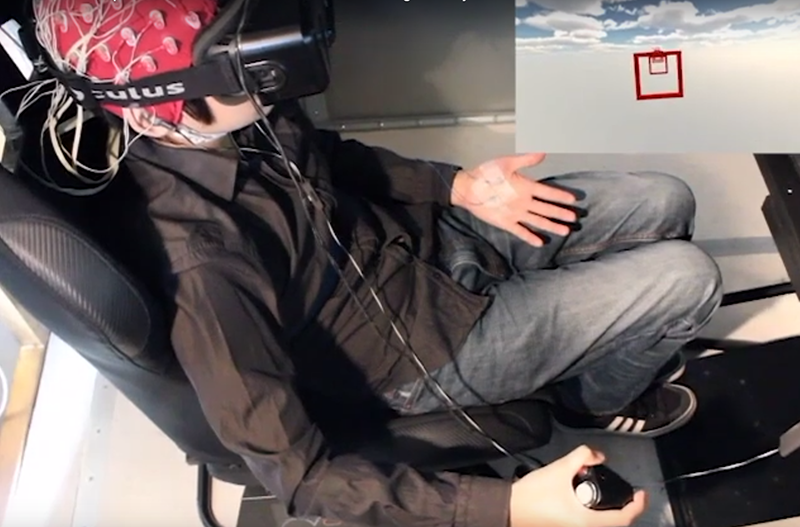When we feel agitated, fearful, or calm, our state of mind can significantly affect our ability to make decisions, judgments, and actions. For example, when walking across a beam, your odds of making across the beam without falling off is dramatically better if the beam is only six inches off the ground. But at 60 feet off the ground you are terror stricken and you’re not sure whether you can make it to the other end.
Read more CTRL Labs’ Wearable Armband Lets You Control Your Computer with Your Mind
For the first time, researcher at Columbia Engineering have shown that by using online neurofeedback it is possible to modify a person’s arousal state to improve performance in a demanding sensory motor task, such as flying a plane or driving in suboptimal conditions. The researchers monitored the arousal states of the participants by using a brain computer interface (BCI) through EEG in real time, when they were engaged in a virtual reality aerial navigation task, reports Columbia Engineering.
The system generated a neurofeedback signal that helped participants to decrease their arousal in particularly difficult flight situations, which in turn improved participants’ performance. The study was published in the Proceedings of the National Academy of Sciences.

The 20 participants in the study were wearing VR headsets and were given a task to navigate a simulated airplane through rectangular boundaries. This task created cognitive stresses when the boxes were made narrower every 30 seconds. This escalated arousal and quickly resulted in failure like, missing or crashing into the boundary. But when the researchers used neurofeedback, the participants performed better, and were able to fly longer while performing the difficult tasks that required high levels of visual and motor coordination. The researchers found a 20% improvement in performance among the participants.
Read more MIT Researchers Develop MRI Implant that Can Monitor Electronic Signals Inside the Brain
“Our work shows that we can use feedback generated from our own brain activity to shift our arousal state in ways that significantly improve our performance in difficult tasks—so we can hit that home run or land on a carrier deck without crashing,” says study leader Paul Sajda, professor of biomedical engineering (BME), electrical engineering, and radiology.












